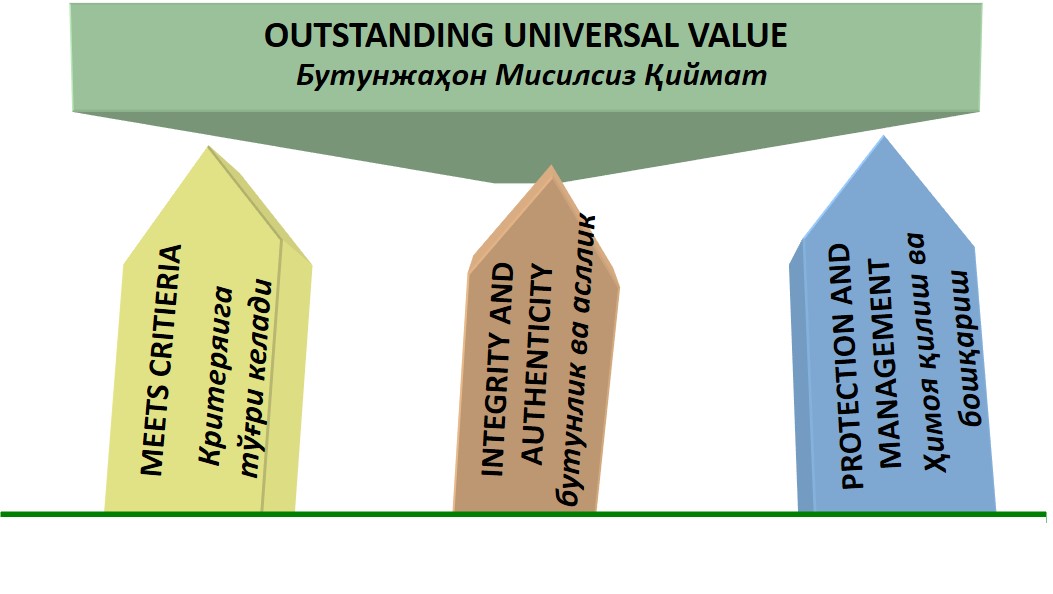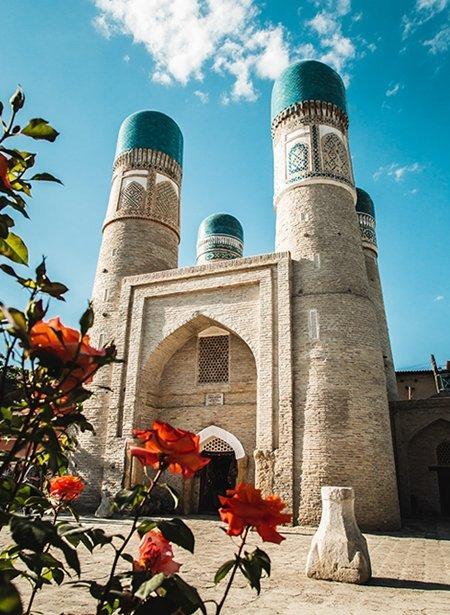World Heritage and Sustainable Development
About the convention
The United Nations Educational, Scientific and Cultural Organization (UNESCO) 1972 Convention Concerning the Protection of the World Cultural and Natural Heritage, known as the World Heritage Convention, is the international agreement recognized worldwide by the States Parties . By signing the Convention, each country pledges to conserve not only the World Heritage sites situated on its territory, but also to protect its national heritage.
Countries adhered to the World Heritage Convention have agreed agree to identify and nominate natural and cultural properties of Outstanding Universal Value (OUV) on their national territory to be considered for inscription on the World Heritage List . The OUV means “cultural and / or natural significance which is so exceptional as to transcend national boundaries and to be of common importance for present and future generation of all humanity” (OG 49). The sites also have to meet at least one out of ten selection criteria .
Outstanding Universal Value
Each property on the World Heritage List has its own Statement of Outstanding Universal Value (SOUV). This includes a brief synthesis of the significance (values), criteria, integrity and authenticity and management arrangements that are in place. These terms are explained in the Operational Guidelines for the Implementation of the World Heritage Convention, together with the text of the Convention, is the main working tool on World Heritage.

The three pillars of Outstanding Universal Value. Source: Based on IUCN (2007).
Criteria
Why is this place important? Based on the Operational Guidelines (OG 77), the Committee considers a property as having Outstanding Universal Value (see paragraphs 49-53) if the property meets one or more of the following criteria. Nominated properties shall therefore:
(i) represent a masterpiece of human creative genius;
(ii) exhibit an important interchange of human values, over a span of time or within a cultural area of the world, on developments in architecture or technology, monumental arts, town-planning or landscape design;
(iii) bear a unique or at least exceptional testimony to a cultural tradition or to a civilization which is living or which has disappeared;
(iv) be an outstanding example of a type of building, architectural or technological ensemble or landscape which illustrates (a) significant stage(s) in human history;
(v) be an outstanding example of a traditional human settlement, land-use, or sea-use which is representative of a culture (or cultures), or human interaction with the environment especially when it has become vulnerable under the impact of irreversible change;
(vi) be directly or tangibly associated with events or living traditions, with ideas, or with beliefs, with artistic and literary works of outstanding universal significance. (The Committee considers that this criterion should preferably be used in conjunction with other criteria);
(vii) contain superlative natural phenomena or areas of exceptional natural beauty and aesthetic importance;
(viii) be outstanding examples representing major stages of earth's history, including the record of life, significant on-going geological processes in the development of landforms, or significant geomorphic or physiographic features;
(ix) be outstanding examples representing significant on-going ecological and biological processes in the evolution and development of terrestrial, fresh water, coastal and marine ecosystems and communities of plants and animals;
(x) contain the most important and significant natural habitats for in-situ conservation of biological diversity, including those containing threatened species of Outstanding Universal Value from the point of view of science or conservation.
Authenticity
Is it truthful? Cultural value needs to be truthfully and credibly expressed through a variety of attributes (OG para. 82)
Integrity
Does it tell the whole story? Integrity is a measure of the wholeness and intactness of heritage and its attributes (OG para. 88)
- Wholeness: All necessary elements to express OUV are within the property
- Intactness: All attributes are still present and not eroded
- Absence of threats: Threats of development and / or neglect are absent
Protection and Management
What is needed to assure its future? Protection and management include an appropriate regulations, management plan or other documented management system, defined boundaries and buffer zones and a systematic monitoring and reporting of each World Heritage property.
- Management Systems: Each nominated property should have an appropriate management plan or other documented management system which must specify how the Outstanding Universal Value of a property should be preserved, preferably through participatory means (OG para.108-118bis). An Intergrated Management Plan could include other plans such as cconservation plan or tourism plans.
- Boundaries: They incorporate all the attributes that convey the Outstanding Universal Value and ensure the integrity and/or authenticity of the property.
- Buffer Zone: It is an area surrounding the World Heritage Site that gives an added layer of protection to the Site. Buffer Zones should include the immediate setting of the nominated Site, important views and other areas or attributes that are functionally important as a support to the Site and its protection.
Strategic Objectives - The "Five Cs" and Sustainability
The World Heritage Committee invites all interested parties to co-operate and to promote the following objectives:
Credibility
Conservation
Capacity-building
Communication
Communities
These strategic objectives were adopted in 2002 with the Budapest Declaration on World Heritage and the addition of the “Fifth C” of Communities proposed by New Zealand during the World Heritage Committee meeting in 2007.
The integration of these objectives can be clearly seen in the UNESCO Recommendation on the Historic Urban Landscape and the Sustainable Development Goals.
UNESCO Recommendation on the Historic Urban Landscape
The Recommendation was adopted on 10 November 2011 at the UNESCO’s General Conference. It was the first instrument on the historic environment issued by UNESCO in 35 years.
- Recognition of dynamic nature of living cities (beyond static monuments or group of buildings
- Moves beyond the preservation of the physical environment and focuses on the entire human environment
- Seek a balance between preservation and protection of heritage, economic development, functionality, and livability of a city.
- Values as guiding principles for heritage preservation and economic regeneration
- UNESCO works with cities to support the integration of environmental, social and cultural concerns
into the planning, design and implementation of urban development.
Sustainable Development Goals and Cultural Heritage
The Sustainable Development Goals (SGD) also known as the Global Goals, were adopted by all United Nations Member States in 2015 as a universal call to action to end poverty, protect the planet and ensure that all people enjoy peace and prosperity by 2030. These objectives form a program of sustainable, universal and ambitious development, a program of the people, by the people and for the people, conceived with the active participation of UNESCO.
In 2020, ICOMOS released the Sustainable Development Goals Policy Guidance for Heritage and Development Actors. The Policy Guidance document was developed by the ICOMOS SDGs Working Group. The aim of this Policy Guidance document is twofold: 1) engage development actors and raise awareness of the potential contribution of heritage practices to sustainable development processes; 2) guide ICOMOS members and heritage professionals at large, in adopting a sustainable development perspective in their heritage practices and aligning them to the SDGs. It has policy statements for each SDG illustrated with case studies.
Read more here about Guidelines and Resources for the World Heritage Convention, Monitoring and Reporting, and National Legal Framework.

